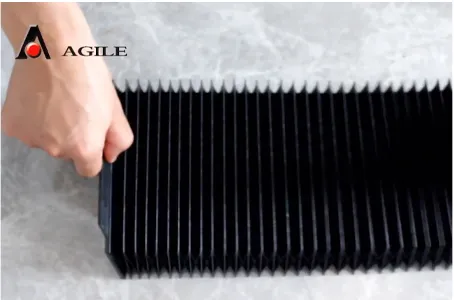Comparing Synchronous Belts and V Belts in Mechanical Applications
Synchronous Belts vs. V Belts A Comprehensive Comparison
When it comes to mechanical power transmission, the choice between synchronous belts and V belts is crucial. Each type of belt has its unique characteristics, advantages, and disadvantages that make them suitable for different applications. Understanding these differences can help engineers and designers make informed decisions for their systems.
Synchronous Belts
Synchronous belts, commonly known as timing belts, are designed to transmit power with precise timing. These belts feature teeth that mesh with matching grooves on the pulleys, ensuring synchronous rotation of the shafts they connect. This design minimizes slippage and maintains accurate synchronization between components, making synchronous belts ideal for applications where timing is critical, such as in automotive engines, robotics, and conveyor systems.
One of the key advantages of synchronous belts is their efficiency. Because they engage directly with the pulley teeth, they can achieve high power transmission efficiency, often exceeding 95%. This efficiency translates to lower energy consumption and reduced heat generation, which can prolong the lifespan of the system. Moreover, synchronous belts operate quietly and require less maintenance compared to other mechanical linkages.
However, synchronous belts also have limitations. They are typically more expensive than V belts and require precise alignment during installation to function correctly. Additionally, they can be sensitive to temperature and contamination, which could lead to reduced performance or failure if not properly managed.
V Belts
V belts, on the other hand, are one of the most common forms of power transmission. Their trapezoidal cross-section allows them to fit snugly into the grooves of V pulleys, creating friction that drives the belt along. V belts are widely used in various applications, from household appliances to industrial machinery.
synchronous belt vs v belt

One significant advantage of V belts is their simplicity and cost-effectiveness. They are generally less expensive than synchronous belts and easier to install. V belts are also more forgiving when it comes to misalignment; they can operate reasonably well even if the pulleys are not perfectly aligned. This quality makes them a popular choice for a wide range of applications.
Despite these benefits, V belts do have some drawbacks. They can experience slippage under high loads or when not properly tensioned, leading to inefficiencies and potential damage to the system. Additionally, V belts do not offer the same level of precision as synchronous belts, making them less suitable for timing-critical applications.
Choosing the Right Belt
The decision between synchronous belts and V belts ultimately depends on the specific requirements of the application. If precise timing, high efficiency, and minimal maintenance are priorities, synchronous belts are often the better choice. They excel in applications requiring accurate synchronization and reduced noise levels.
Conversely, if cost, simplicity, and flexibility in alignment are more important, V belts may be the way to go. Their ability to tolerate misalignment and their lower initial cost make them ideal for general-purpose applications.
Conclusion
In summary, both synchronous belts and V belts play vital roles in mechanical power transmission. Each has its strengths and weaknesses, and the choice between the two should be based on the specific needs of the application. By carefully considering factors such as efficiency, complexity, cost, and alignment, engineers can select the appropriate belt type to ensure optimal performance and longevity in their systems.








